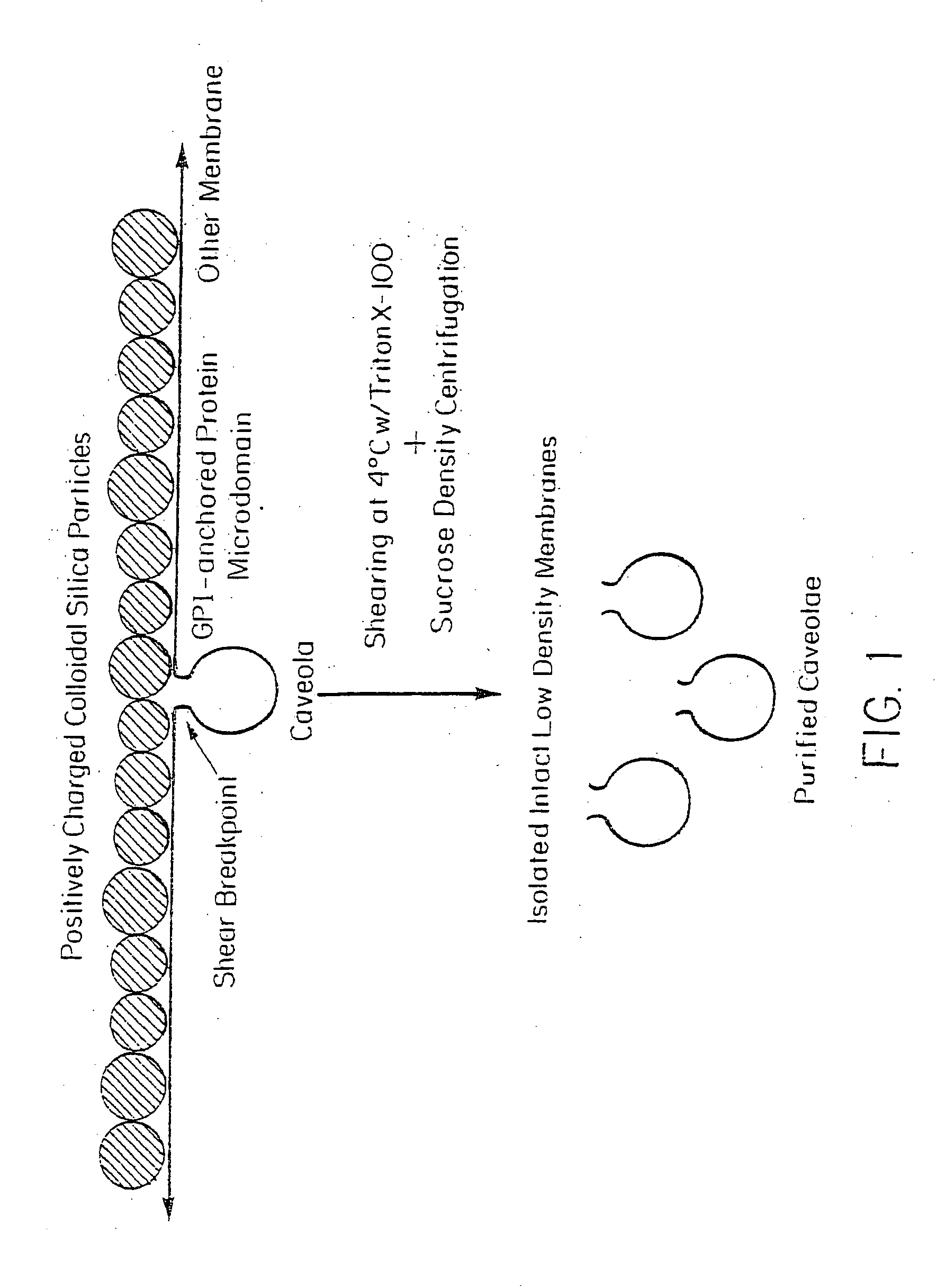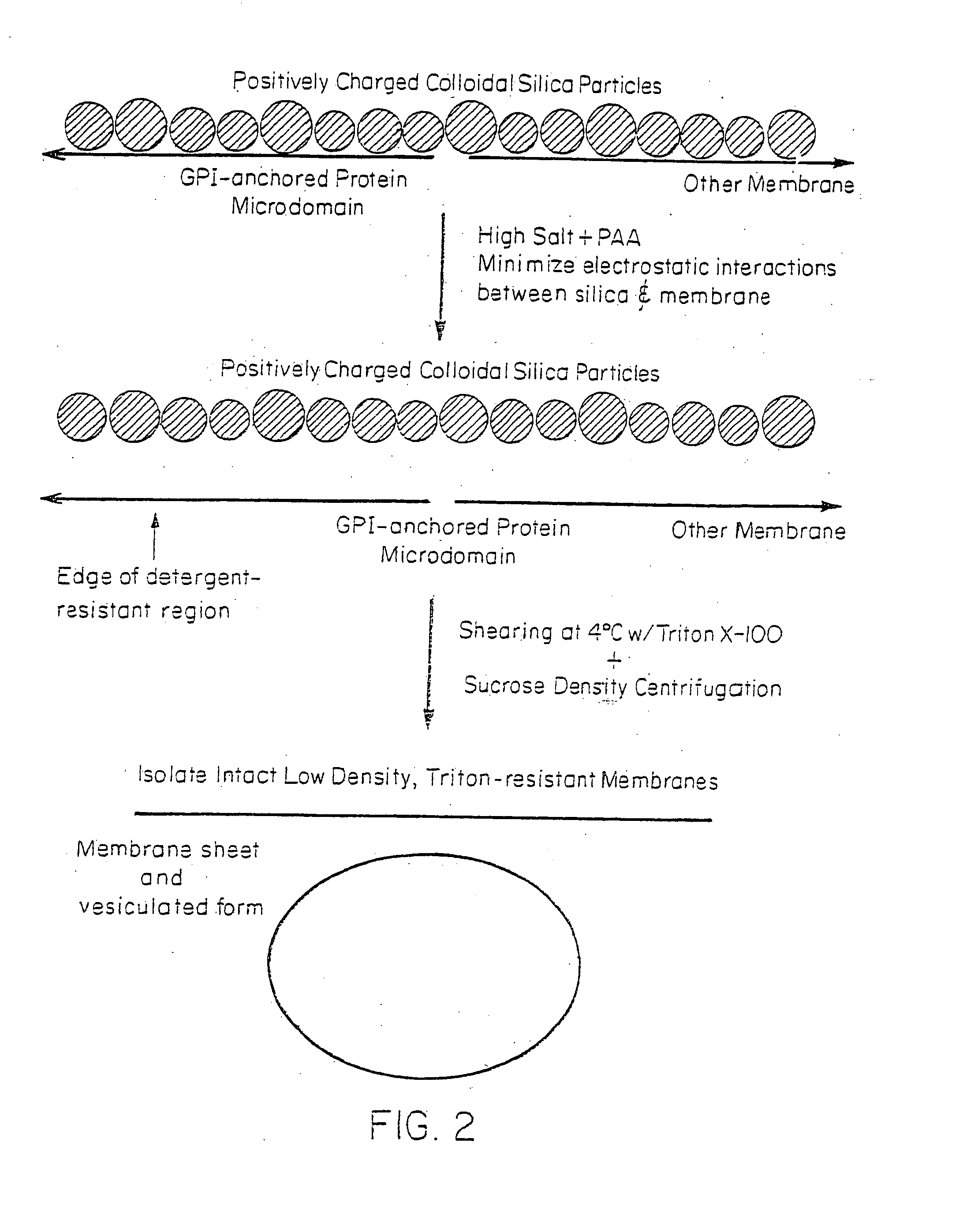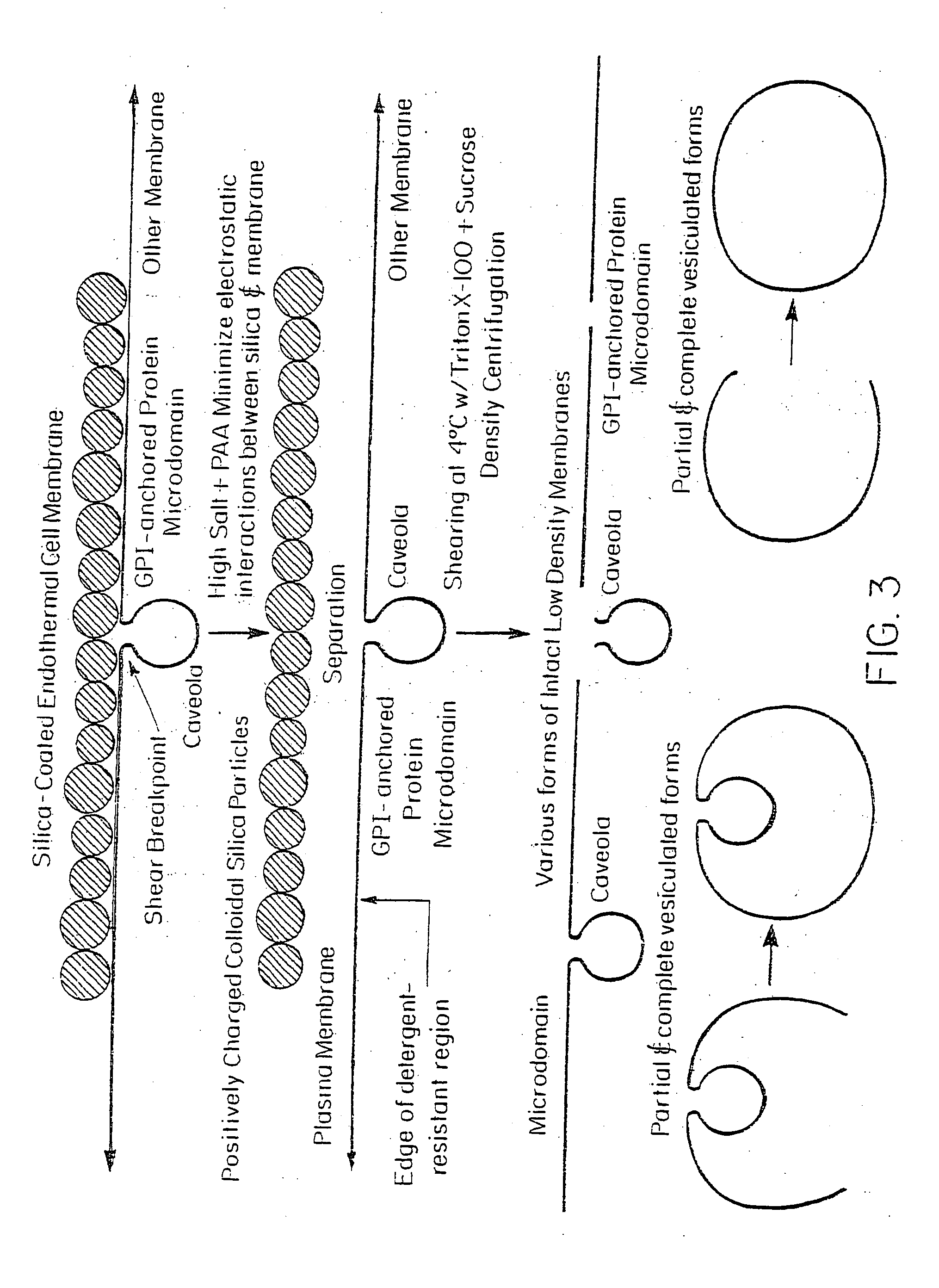Targeting endothelium for tissue-specific delivery of agents
a technology of endothelium and tissue, applied in the direction of immunoglobulins against animals/humans, drug compositions, medical preparations, etc., can solve the problems of caveolae's inability to transport their cargo across cells, and the inability to perform much less effectively
- Summary
- Abstract
- Description
- Claims
- Application Information
AI Technical Summary
Benefits of technology
Problems solved by technology
Method used
Image
Examples
example 1
Isolation of Coated Membrane Pellets (P)
[0069] Isolation of caveolae associated with the endothelial cell surface has many difficulties. The endothelium represents but a small percentage of a diverse population of cells in any organ. Unfortunately, isolating endothelial cells from tissues as a primary source or even for growth in culture causes morphological changes, including a very significant loss in cell surface caveolae (Schnitzer, J. E., et al., Biochem. Biophys. Res. Commun. 199:11 (1994)). Also, noncoated vesicles that are very similar in size and density to plasmalemmal caveolae and may even contain the caveolar marker protein caveolin (Dupree, P., et al., EMBO J. 12:1597 (1993); Kurzchalia, T. V., et al., J. Cell Biol. 118:1003 (1992)), may be found in other cellular compartments such as the trans-Golgi network. Moreover, caveolae may vary according to cell type (Izumi, T., et al., J. Electron Microsc. 38:47 (1989)). To overcome the above problems, a strategy of first isol...
example 2
Isolation of Purified Caveolae (V)
[0073] Caveolae attached on the cytoplasmic side of the plasma membranes, opposite to the silica coating in the silica-coated membrane pellets (P), were stripped from the membranes by shearing during homogenization at 4° C. in the presence or absence of Triton X-100. They were then isolated by sucrose density gradient centrifugation to yield a homogenous population of biochemically and morphologically distinct caveolar vesicles (V). This technique is represented schematically in FIG. 1.
[0074] Isolation of Vesicles Stripped from Silica-Coated Membranes.
[0075] The silica-coated membranes (P) in Triton X-100 were stripped of protruding caveolae by shearing in a homogenizer and then subjected to sucrose density centrifugation to isolate the caveolae. Analysis of 34 fractions from the sucrose gradient revealed a peak signal for caveolin well separated from that for ACE. Little caveolin was detected in the silica-coated membrane after removal of the ves...
example 3
Isolation of Microdomains of GPI-Anchored Proteins (G)
[0082] The silica coating of the outer membrane surface altered the way in which the GPI-anchored proteins interacted with various detergents and thus prevented the separation of noncaveolar, detergent-resistant microdomains from the cell membranes. Cationic silica particles interact with the anionic cell surface to stabilize it against vesiculation or lateral rearrangement by immobilizing membrane molecules (Chaney, C. K. and Jacobson, B. S., J. Biol. Chem. 258:10062 (1983); Patton, W. F., et al., Electrophoresis 11:79 (1990)). Because the silica particles uniformly coated the cell surface but were rarely associated with or present inside the caveolae because of their size, it is likely (Schnitzer, J. E., et al., Proc. Natl. Acad. Sci. USA 92:1759 (1995); Jacobson, B. S., et al., Eur. J. Cell Biol. 58:296 (1992)) that the plasma membrane was stabilized by being firmly attached on one side to most, if not all, nonvesiculated regi...
PUM
| Property | Measurement | Unit |
|---|---|---|
| temperature | aaaaa | aaaaa |
| physiologic temperature | aaaaa | aaaaa |
| pH | aaaaa | aaaaa |
Abstract
Description
Claims
Application Information
 Login to View More
Login to View More - R&D
- Intellectual Property
- Life Sciences
- Materials
- Tech Scout
- Unparalleled Data Quality
- Higher Quality Content
- 60% Fewer Hallucinations
Browse by: Latest US Patents, China's latest patents, Technical Efficacy Thesaurus, Application Domain, Technology Topic, Popular Technical Reports.
© 2025 PatSnap. All rights reserved.Legal|Privacy policy|Modern Slavery Act Transparency Statement|Sitemap|About US| Contact US: help@patsnap.com



